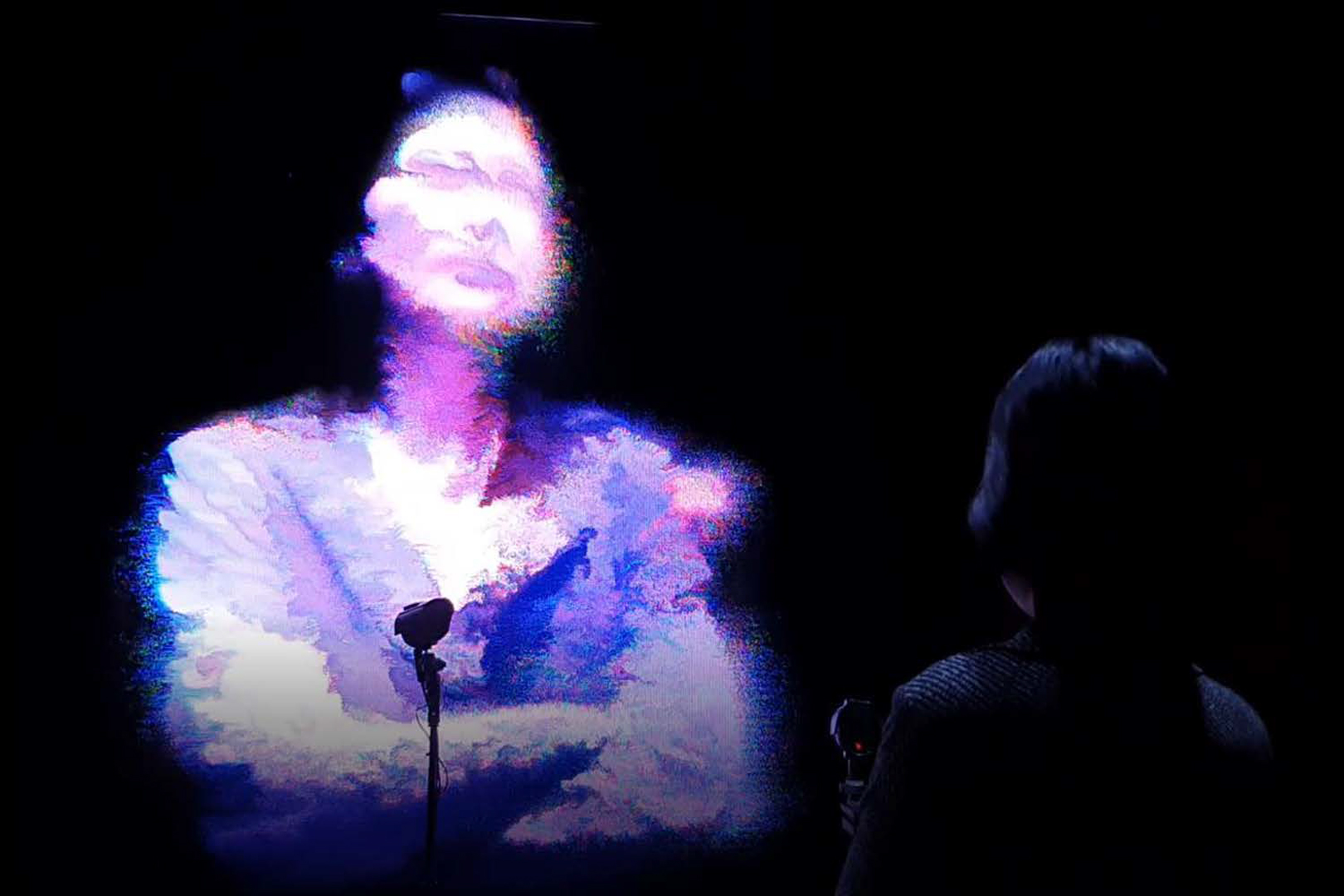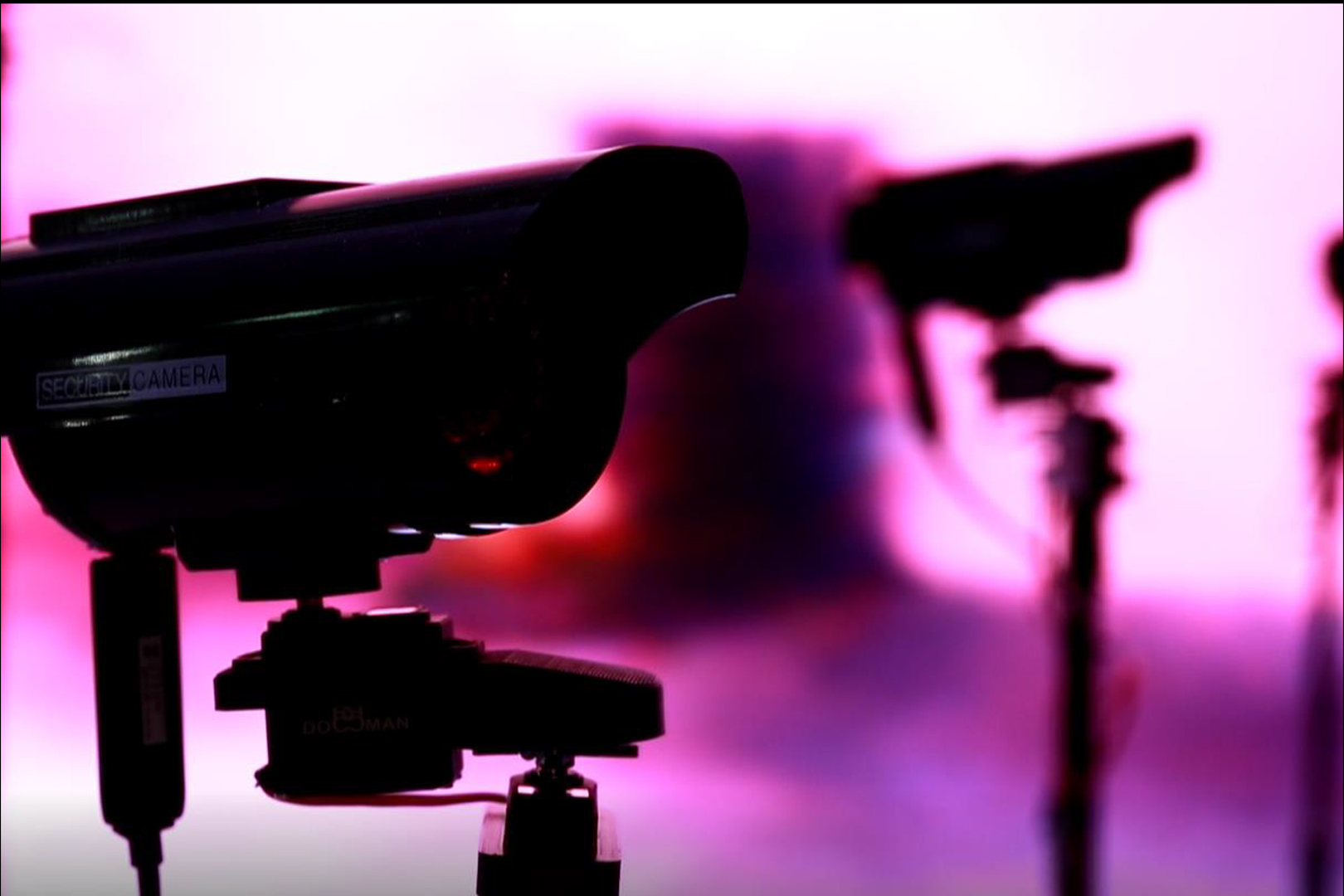Hyunchul Kim, Seonghyeon Kim, Ji Young Jun, Jooyoung Oh: Curveillacne: Multi-User Based Interactive Media Wall
Artist(s):
Title:
- Curveillacne: Multi-User Based Interactive Media Wall
Exhibition:
Category:
Artist Statement:
Summary
CURVEillance is an interactive art installation that criticizes this phenomenon by the vision of cameras that track the audience who approaches the surveillance cameras. Ultimately, the installation aims to raise questions about the distortions of relationships of individuals who usually continue to use the media system in the digital era.
Abstract
It is an inevitable fact that social interaction nowadays is heavily mediated and distorted through the social network system. The presence of various media replicates our images to reproduce under a confirmation bias in our cognitive process. There has been a distorted gap between the original and reproduced images to reveal our identity in this process. The relationship form through this refracted self-image affects the user and the other users and eventually forms a complicated surveillance system.
CURVEillance is an interactive art installation that criticizes this phenomenon by the vision of cameras that track the audience who approaches the surveillance cameras by following steps: 1) Digital images on the media wall are shown by re-pixeled visualization of the audience image through the vision of cameras, and then, 2) In order to capture the movements of audiences, the camera system actively moves and follows them.
Specifically, each single camera lens automatically reacts and stares at the most active individual in the exhibition space by real-time. The media wall presents the reflected images of audiences as the observed objects by a crowd of cameras. In this process, images are scattered and overlapped so that it is hard to recognize the original form. Some participants attempt to get the camera’s attention even if their image can be damaged while others are unintentionally monitored. Therefore, it induces a reversed interaction between participants and the media wall that brings tension from the technical eye. Ultimately, the installation aims to raise questions about the distortions of relationships of individuals who usually continue to use the media system in the digital era.
Team “Q.U.I.T” make art-science projects using interactive media wall. We explore the theories of human mind and computational vision technology to reinterpret and criticize the belief of technology use in our society. So-called “Q.U.I.T”, “Quantifying, User, Interaction, and Technology”, is composed of engineers, artists, and an art curator based on the Department of Culture and Technology in the Korean Advanced Institute of Science and Technology (KAIST).
We try to carry out a particular concept regarding the implicit thinking process that people experience with mutual surveillance and oppression through various forms of technology. Specifically, in the project CURVEillance, we focused on how our image can be represented by distorting, curving, and dispersing images consisted of pixels in the age of digital surveillance. The goal of CURVEillance is to redesign and show the reversed communication between the media and participants through cameras’ vision. Instead of participants affecting the media wall system by one-way directional interaction, the technical system induces audiences to the media wall by the arranged eyes of cameras that follow and capture their movement. Through this process, the work reflects multi-directional perspectives by audiences, cameras, and media wall systems, like in an era of surveillance.
Technical Information:
There are two main components of the system: a visualization part that receives an image from a camera and shows it on a large screen, and a motion part that tracks, evaluates a user’s position, and controls motor modules. We used a separate computer for each system with the same model: MSI GE63 8RF, i7-2.2Ghz, 24GB Ram, and GTX 1070.
The motion part consists of a motion sensor (Microsoft Kinect v2), a control board (Arduino Uno), a custom motion module, and a computer to control. To implement the integrated system for the exhibition, we used the Unity Engine for the primary system and the MS Kinect SDK for Unity and the Ardunity Plug-in. Using them, we implement the whole processing of getting data, processing, and motion control. In our system, the current situation is visualized in real-time, which can monitor the interaction with the audience and the calculation of the application in real-time.
The motion module has two servo motors. The two servo motors were installed in the same direction but are not vertically aligned. This arrangement goes beyond the linear motions unique to servo motors, to achieve unacquainted motion effects. The motion module frame was modeled using Rhinoceros 6.0 and printed via the 3DPrinter (Zotrax M200). We designed the movement module to combine with the stand below and the camera module above.
The motion data of audiences are received through the Kinect and evaluated in our system. Based on our target finding process, the system distinguishes the most active person as a target. We assessed individual activity based on the movements focusing on the movement of one’s head and hands because it is the most natural part that the audience can easily move. When targeting the most active audience, all cameras rotate towards the target.
In the sound installation, Windmill ambiance noise was composed of Ableton live sampling.
Process Information:
The goal of CURVEillance is to redesign and show the reversed communication between the media and participants through cameras’ vision. Instead of participants affecting the media wall system by one-way directional interaction, the technical system induces audiences to the media wall by the arranged eyes of cameras that follow and capture their movement. So most challenging issue was the tracking system that track the audience at the exact moment of movements, which was greatly done by our team member Hyunchul Kim.
Other Information:
Inspiration Behind the Project
CURVEillance is an interactive art installation that criticizes this phenomenon by the vision of cameras that track the audience who approaches the surveillance cameras. Ultimately, the installation aims to raise questions about the distortions of relationships of individuals who usually continue to use the media system in the digital era.
The interesting point of this work is that this work induce reversed interaction between participant and the media wall. Some participants attempt to get the camera’s attention even if their image can be damaged while others are unintentionally monitored. Therefore, it induces a reversed interaction between participants and the media wall that brings tension from the technical eye.






